I may earn a small commission from purchases made through product links on this website at no extra cost to you. As an Amazon Associate I earn from qualifying purchases.
Last updated: December 15, 2023
Learn how to play horseshoes in the yard with our guide to the rules, scoring, and field setup of this entertaining game.
Horseshoes, also commonly known as horseshoe pitching, is a classic outdoor lawn game, perfect for backyard barbecues, tailgate parties, or afternoons in the park. This target-throwing game is simple and fun for the whole family, but people’s differing thoughts and opinions about the rules can often cause a bit of confusion.
In this article, I will go over the rules of the horseshoe game, the common terminology used in horseshoes, and how to keep the score.
Quick navigation:
Horseshoe Rules Quick Guide
Would you like to have the below horseshoe rules and guidelines in an easy-to-print two-page PDF document?
My quick guide explains the rules of horseshoe pitching in easy-to-understand language without any advertisements, photos, or other distractions.
For only $2.50, this quick guide is yours so you can print it out and take it with you to your next horseshoe game!
What Is Horseshoes?
Horseshoe pitching is one of the more traditional lawn games, which revolves around throwing horseshoes against a target stake in a lawn or sandbox area.
It’s a serious enough game or sport that it has its own governing body, the National Horseshoe Pitchers Association (NHPA), which maintains the rules and specifications of the game of horseshoes.
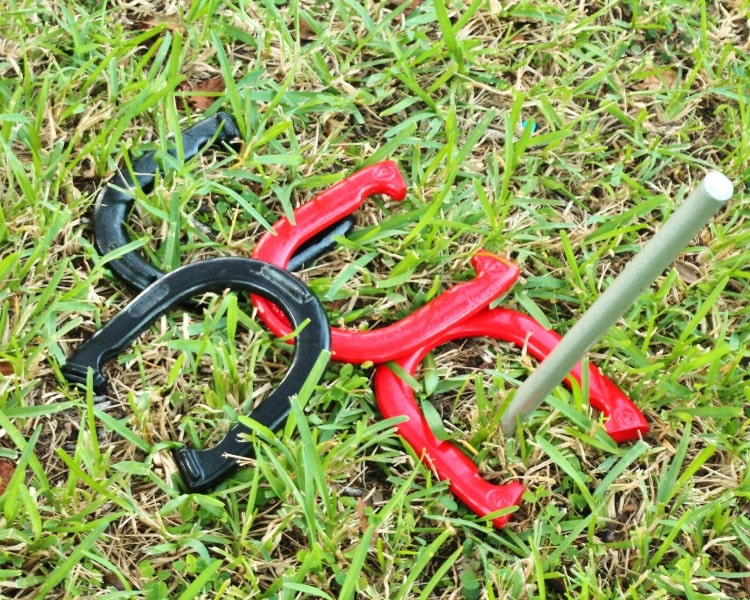
As with so many lawn games, there are various stories and urban myths surrounding the history of the game of horseshoe throwing, but there is a common belief that the game is closely related to the traditional game of quoits.
The similarities between the two are apparent, as the concept of quoits is to throw a metal, rope, or rubber ring away to land over or near a planted spike.
Why Do I Like This Game?
I am quite a traditional person, and as such, I appreciate the traditional nature of this game.
What I also like about horseshoe pitching is that anyone can start playing this game because the basic rules can be picked up quite quickly.
But at the same time, it’s also a game that requires skill if you want to be really good at it, so there will always be room for improvement.
- Tested and approved by the National Horseshoe Pitchers Association (NHPA)
- Forged steel construction for maximum toughness and enhanced durability. Forged...
- Each horseshoe is medium weight 2. 25 lbs. , steel stakes are 24” long and...
Horseshoe Game Rules for Dummies
To explain the game of horseshoe pitching, I am going to walk you through the following topics:
- Game terminology
- Game setup
- The rules
- Scoring
- Game etiquette
Let’s first take a look at some of the terminology used in this fun game.
1. Game Terminology
A few phrases and terms are essential for any horseshoes player to know, ranging from the lines you throw behind to the objects you throw:
- The court:
Refers to the entire play area, which is between the back of the two pits. - The pit:
Refers to the rectangular area around the stake, which is around 3×6 feet in size, with the stake in the middle. - The foul line:
The line players throw behind; if a player crosses this line, they forfeit their throw. - The horseshoe:
The object players throw at the stake. Horseshoes cannot be more than 2 lbs 10 oz, 7 1/4 inches wide, 7 5/8 inches long, and cannot have an opening of more than 3 1/2 inches. - The stake:
The pin that people throw their horseshoes at, trying to get as close as possible. - Ringers:
When the stake is inside the mouth of the horseshoe, which means that the stake is inside the horseshoe’s opening. If you cannot place a ruler on each end without touching the stake, it is not a ringer. - Leaner:
When a horseshoe touches the stake but is not flat on the ground.
2. Game Setup
Setting up horseshoes is easy and only requires a few steps.
First, you put your stakes in the ground. According to the National Horseshoe Pitchers Association of America (NHPA), the stakes should be 40 feet (12 meters) apart (source). But if you are a beginner, you may want to put them closer together.
You then draw the foul line three feet in front of each stake, and that’s all you need to do to get the court ready for playing horseshoes.
In NHPA matches, they also create a pit around the stake, but this is not a requirement for casual games. For a bit of fun in the backyard, it’s best to keep things simple.
If you’d like to know what an official horseshoe court looks like, check out my guide to horseshoe court and pit dimensions with a complete outline of all the elements that make up a horseshoe playing area.
Here is a sneak preview:
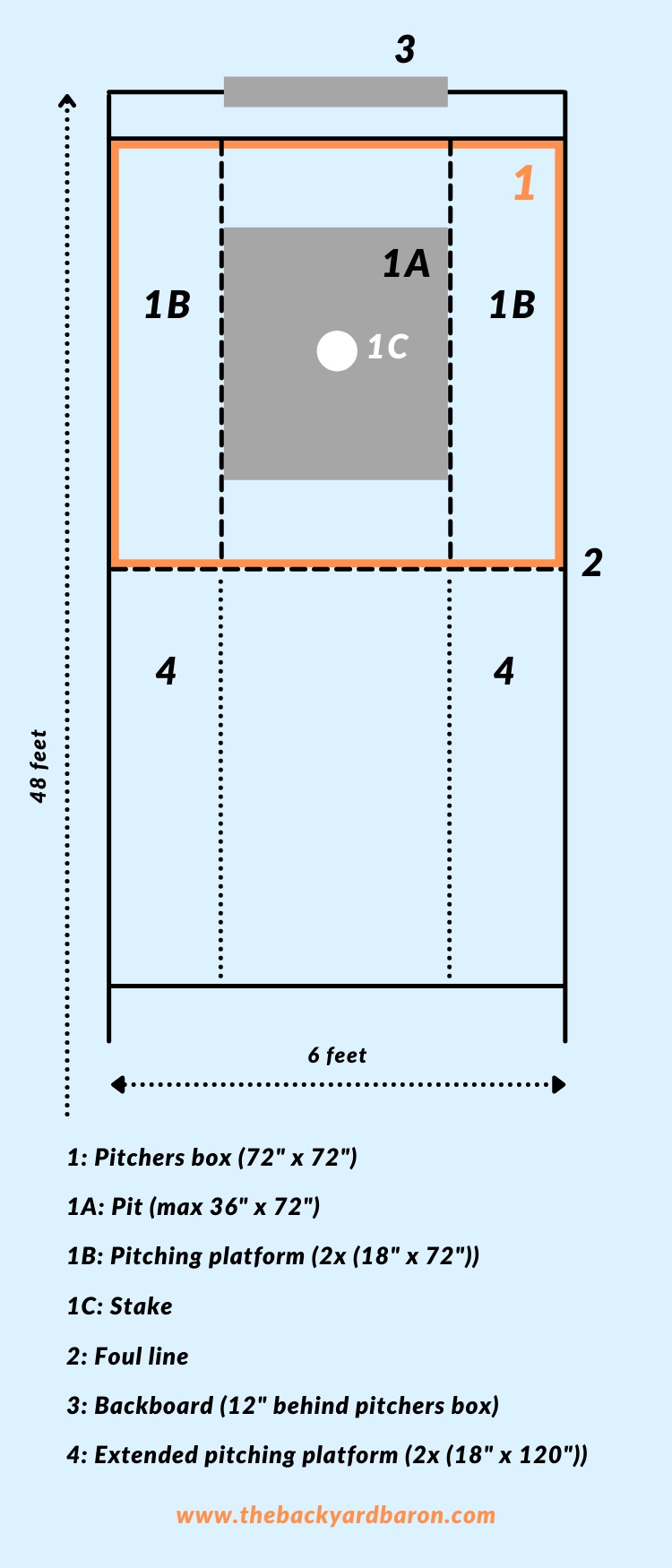
3. The Rules
Horseshoes is a team game, and you should play it with two teams with two players on each team, although you can, of course, also play one against one.
Once you have decided on teams, you can either flip a coin or throw horseshoes to decide which team goes first. If you opt for the latter, all four players throw a horseshoe, and the player whose horseshoe is closest can choose whether they want to go first.
The teams then split up, with one player from each team going to each end. Whichever team has the first throw will begin by tossing (also called pitching) their horseshoe at the opposite stake.
Teams alternate their throws, meaning after each throw, the opposing team will get a turn. Once you finish a round, players at the other end of the court have their turn.
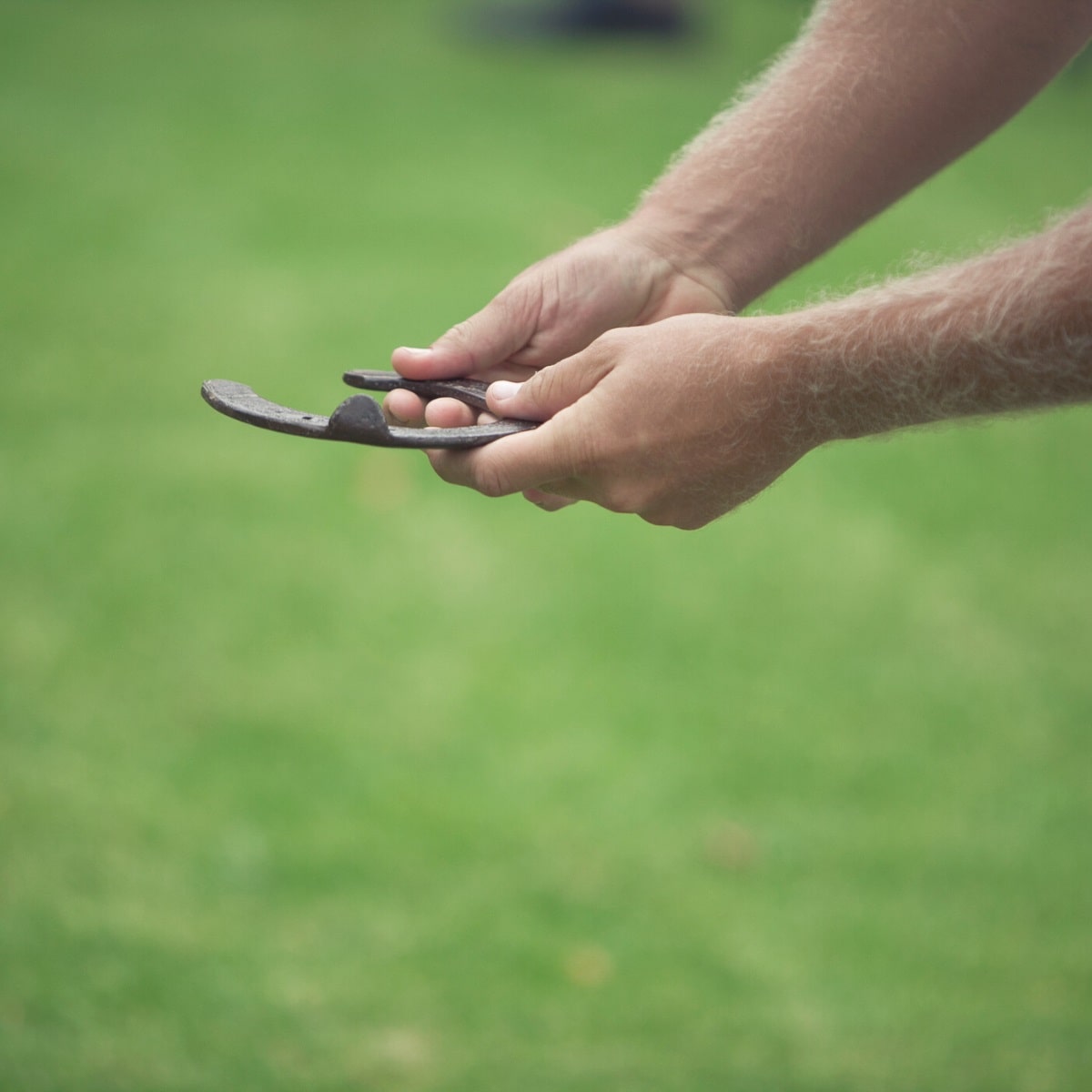
Throws must be underhand and from behind the foul line. Your foot can be on but not crossing the foul line, and your pitch will still count. But if any part of your foot passes the line, your pitch won’t count.
Each player pitches two horseshoes before the scoring for that round is counted. In NHPA matches, teams play until one has 40 points. However, many amateur players prefer playing to 21 points. You can play up to whatever score you choose, but it is essential to ensure everyone knows what score you are playing up to.
Once a team reaches the target score, they are declared the winner! You can always go for the best two out of three or three out of five.
4. Scoring
Teams can earn a maximum of 6 points in any given round.
The scoring is as follows:
- 6 Points for two ringers.
- 4 Points for one ringer and the next closest horseshoe.
- 3 Points for one ringer.
- 2 Points for having both horseshoes closest to the stake.
- 1 Point for having the horseshoe closest to the stake.
- Cancellation scoring applies.
After both teams finish pitching, the first task is determining which horseshoe is closest to the stake. Ringers are automatically considered to be the closest horseshoes to the stake.
After ringers, leaners are considered the closest a horseshoe can be to the stake. After leaners, horseshoes touching the stake while flat on the ground are closest.
If no ringers or horseshoes are touching the stake, you measure which horseshoe is closest to the stake by determining the distance from the horseshoe’s closest point.
Cancellation Scoring
In horseshoes, the concept of cancellation scoring is used. This essentially means that only one team can earn points per round (or inning).
To illustrate, let’s have a look at a few examples:
- Team A has two ringers and Team B has one ringer. Team A wins the round with 3 points (6 – 3 = 3 points).
- Team A has one ringer, Team B has one ringer, and Team A’s second shoe is closest to the stake. Team A wins the round with 1 point (3 – 3 + 1 = 1 point).
- Team A has one ringer, Team B has no ringers, and Team A’s second shoe is closest to the stake. Team A wins the round with 4 points (3 + 1 = 4 points).
- Team A has no ringers, Team B has no ringers, and both of Team A’s shoes are closest to the stake. Team A wins the round with 2 points (1 + 1 = 2 points).
- Team A has one ringer, Team B has no ringers, and both of Team B’s shoes are closer to the stake than Team A’s second shoe. Team A wins the round with 3 points (Team B’s shoes are disregarded).
In NHPA rules, only pitches that land within one horseshoe length are eligible to be counted for scoring purposes. You can choose to include your own version of this rule and make it whatever length you choose based on your skill level.
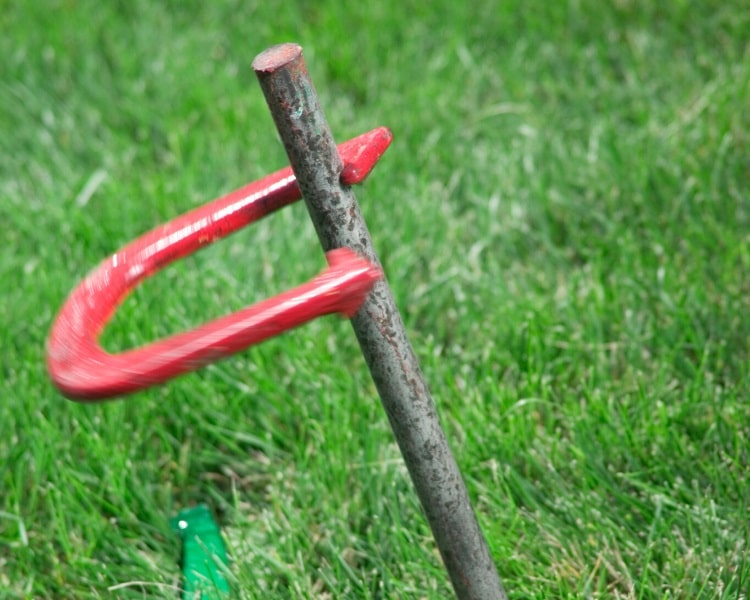
5. Game Etiquette
Horseshoes is a friendly game, and you should treat it as such.
Competitiveness is encouraged, but you shouldn’t let it get out of hand. Distracting players, verbally or non-verbally, is not appreciated.
There are no referees in horseshoes, so it is up to players to enforce the rules on other players and, more importantly, themselves. If someone calls a foul, don’t respond negatively; hear them out, and if you disagree, you do so respectfully.
Most importantly, be kind and have fun!
Printable Horseshoe Rules Quick Guide
Would you like to have the above rules and guidelines in an easy-to-print two-page PDF document?
My quick guide explains the rules of horseshoe pitching in easy-to-understand language without any advertisements and other distractions.
For only $2.50, this quick guide is yours so you can print it out and take it with you to your next horseshoes game. By purchasing this handy guide, you will be supporting my website so I can keep creating more of this type of content.
Final Thoughts
As you might have guessed, the horseshoe pitching game requires skills if you want to be really good at it. But as with so many backyard games, horseshoes is also the perfect recreational game anyone can play.
A brand new horseshoe set isn’t expensive at all, so go ahead and buy yourself one of those so you can start practicing this game tomorrow. Horseshoes is definitely one of the most popular games in my backyard.
Happy pitching!
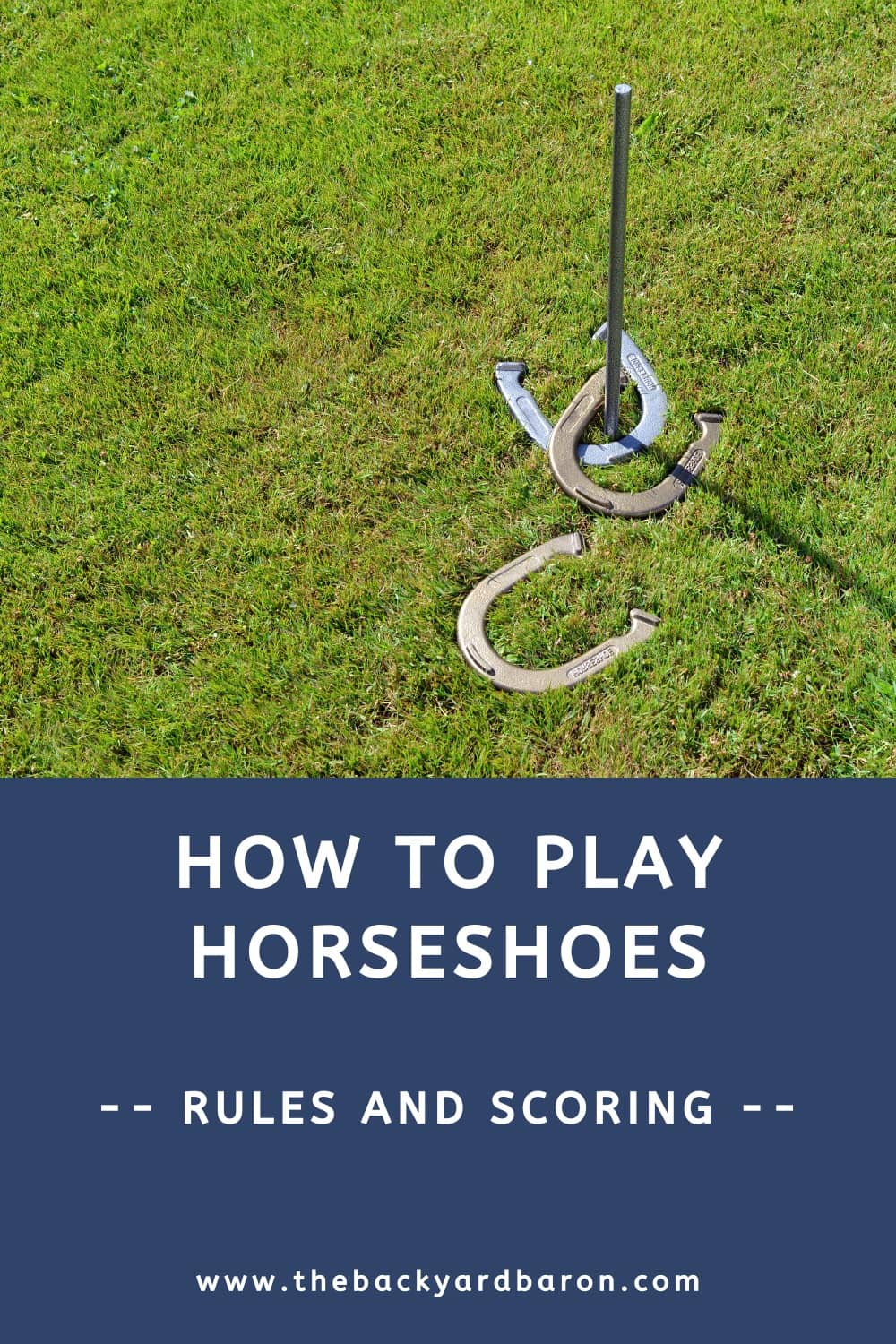
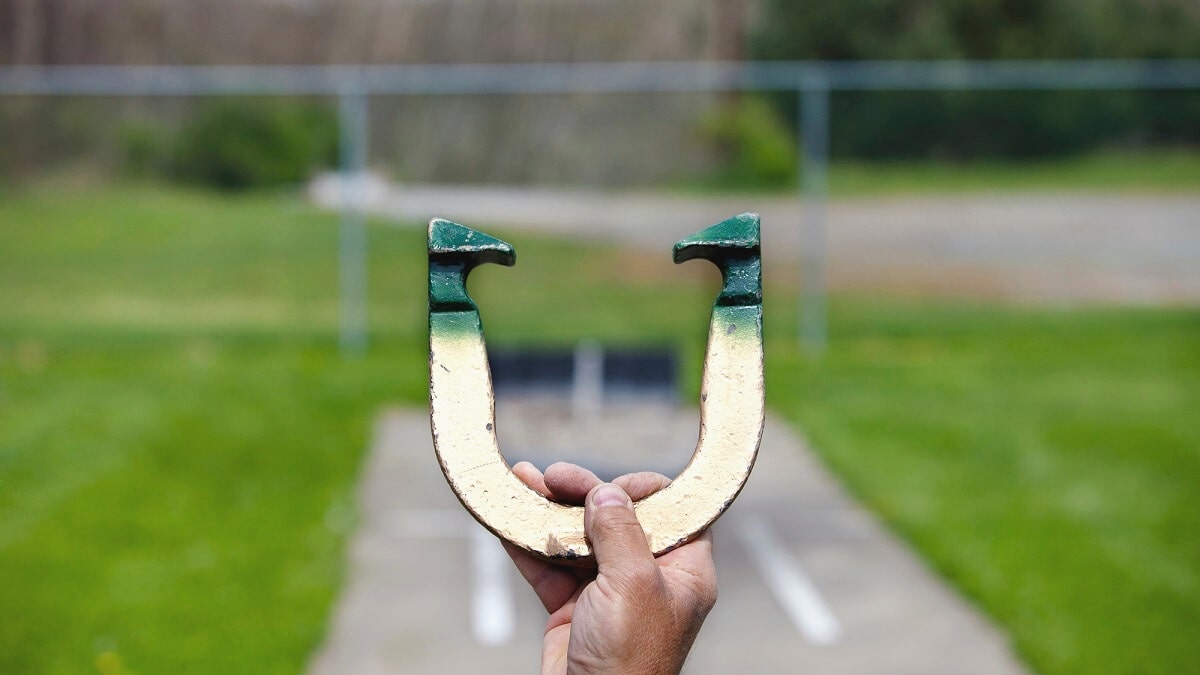

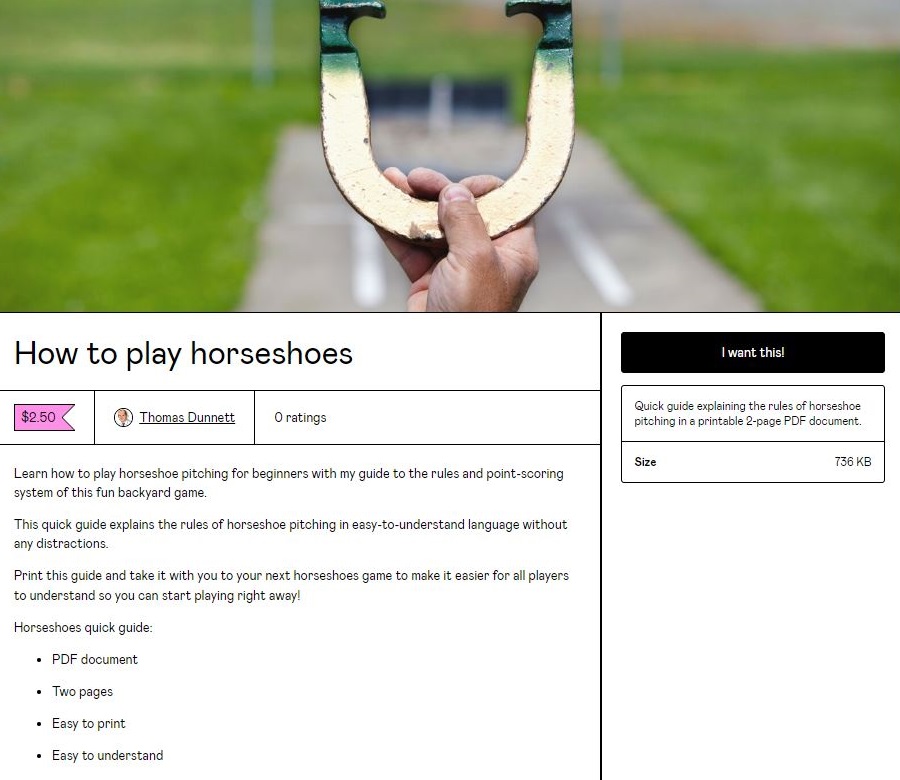
With illustration 5 for scoring. If player B has two shoes closer to the stake than player A then it would be worth 2 points. Therefore A wins a total of 1 point. I do not see how player B’s shoes do not count.
Hi John, only one team can earn points. In example 5, team A has one ringer, so gets three points because Team B’s points are disregarded because they didn’t score a ringer.
I will be playing in my first horseshoe tourney this weekend. So elected to read up on rules and all. I’m with John above, why doesn’t player B get credit for two and thus awarding only one point to player A?
Hi Douglas,
To my knowledge, if team A scores one or more ringers, and team B doesn’t, then team B’s points, if any, get disregarded, so no credit. But I could be wrong! Maybe others can chime in and share their thoughts.
Thanks for commenting, John and Douglas, it keeps me alert.
Great rules.
I just got back from cousin’s reunion party a great time in which many games played, horseshoes being one of them.
One question. If 2 horses are within the post and 1 land on top of the opponent’s, do the points get cancelled?
Hi Ray, glad to hear you enjoyed the game.
Shoes landing on top of one another doesn’t change the point-scoring or point-cancelling rules, so you’d still need to measure the distance to the stake, and then apply the same rules.
Update. Thank you, the games were fun. I was so bad in the beginning that improvement was easy. I did however land a toss on the pavement around the sand pit and broke his horseshoe in half. He has good humor about it but I feel the need to replace his horseshoe or buy him a set. Any suggestions?
Captain Cady, good to hear the games were fun.
For casual backyard play, I’d recommend to pick up a set from Amazon, they have some pretty decent sets available at affordable prices.
The Baden set, see further above, is the one I bought a couple of years ago and is good enough. I’ve since given it to my nephew and he’s still happy with it.
Thank you Thomas, I will check it out.
Thanks for these most excellent Horseshoe Game Rules for Dummies. I am playing today with my new neighbor who has never played and I haven’t for 50 yrs. My memory of how to play was pretty close but nice to know for sure.
That’s fantastic to hear, Captain Cady! Enjoy your game today with your neighbor, and hopefully many more games to follow.
How far apart are the stakes?
Hello Larry, the official distance between the stakes is 40 feet. But you can of course put them closer together if you’re a beginner player.
Hope this helps!
Your instructions couldn’t be any better. Thanks and God bless.
Thanks so much Steve. Horseshoes is definitely one of my favorites.